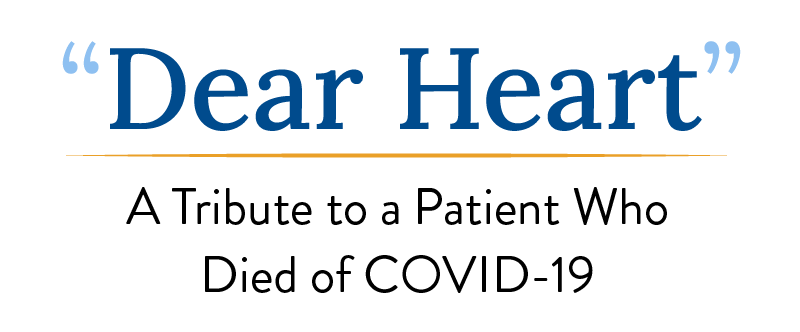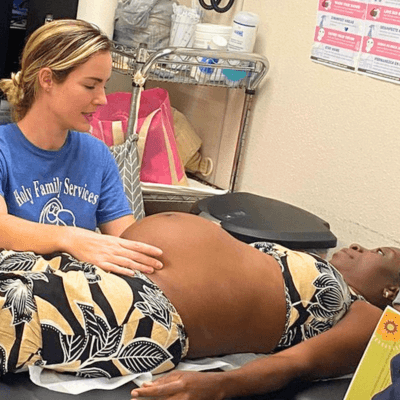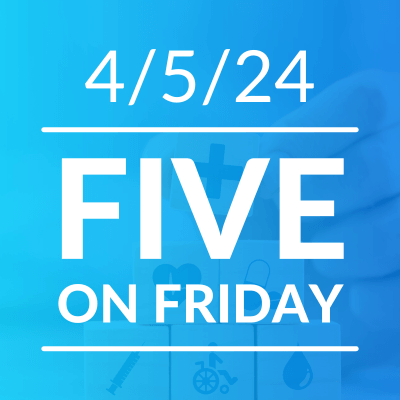A Tribute to a Patient Who Died of COVID-19

By Laszlo Madaras, MD, MPH, Chief Medical Officer for the Migrant Clinicians Network
His name, translated from French, was something like “Dear Heart”* I got to know him when I admitted him to our rural Pennsylvania hospital, and I found the name fit him well. That week, as the hospitalist admitter for the emergency room, I evaluated patients from noon to 7pm every day – but Dear Heart stood out. He was a thin, quiet, humble man who worked odd jobs. From the Democratic Republic of the Congo, he spoke French. He had had a cough and fever for several days, but he said he was afraid to come to the hospital where "all the sick people went," until a group from his church finally convinced him to come to the ER. Since COVID-19 ward protocol restricts visitors, he was there alone with a nurse doing her best to speak through the electronic interpreter service we utilize to communicate in French. This was difficult for various reasons, and he was very nervous. Just like in many places in Africa where I once worked, hospitals are known as the place you go to die, so a significant number of patients arrive very late and very sick, often so sick that going to the hospital to die becomes a self-fulfilling prophecy. When I arrived with my transparent facial guard over a surgical mask covering my N95 respirator, I was speaking loudly -- almost yelling -- but despite my appearance Dear Heart became calmer as he realized he was hearing muffled but familiar French which he could understand and so get an honest update as to his condition. He had bilateral pneumonia, uncontrolled diabetes, and his SARS CoV-2 nasopharyngeal swab -- the test for COVID-19 -- was pending. He did have a fever and hypoxia -- meaning he didn’t have enough oxygen in his blood -- so we treated him as a "person under investigation" or PUI, and I admitted him to a hospital ward that was specific for rule-out PUI's. He got antibiotics for his pneumonia, oxygen for his hypoxia, and a medicine to prevent blood clots in case he did have COVID-19.
My heart sank when several hours later his lab test for diabetes came back with a hemoglobin A1C of 14, indicating very poor diabetic control over the past three months or more; AND he tested positive for COVID-19 at the same time. He was also just over 65. Taken all together, he was now very high risk for death from COVID-19 as a result of his diabetes comorbidity – even more so because his diabetes was uncontrolled.
Dear Heart was transferred to the COVID-19 positive ward and closely followed. I visited him a day later and as luck would have it, my colleague, who spoke Dear Heart’s language fluently, happened to be nearby and could directly interpret. He was feeling better, needed less oxygen, and felt he had been given all the information he needed in what he said was my just-better-than-mediocre French. We optimized his diabetic medications and let him know he would probably need insulin now, and a dietary / nutritional assessment at the community health center where he would follow up once he was discharged.
I was away from the hospital resting during the next two days. I often try to visit my French- and Spanish-speaking patients even when I am no longer their attending doctor, to make sure nothing gets lost in translation or falls through the cracks in a busy hospital ward, especially if I had been with them earlier during their intubation and ventilation time. But Dear Heart did not need intubation, and seemed to have improved. He was weaned from his oxygen to room air and sent home with more oral antibiotics by another hospitalist. I read his discharge summary with a mixture of relief that we had dodged a bullet, and of worry, wondering how he will get the diabetic control he needed in this time of office closures and delayed services during the ongoing pandemic.
The next day, coming back to the hospital, I was told that Dear Heart was at first okay at home alone for one day -- but then had suddenly died after experiencing worse irregular breathing. He refused to be re-hospitalized, despite several church members pleading with him. Maybe the terrifying experience in the hospital and then at home alone was too much; maybe it was always "in the hands of Jesus" as he often said to me during our talks, or maybe it was a pulmonary embolism or sudden heart attack. I was so sorry I did not build a better bridge to this patient, that he could not imagine returning to the hospital and once again face isolation. We always talk about the importance of social distancing -- and I wholeheartedly agree with its critical importance in flattening the curve -- but there is also a cost to social isolation at home and then contact isolation in the hospital for someone who thrives in familiar community and social gathering.
The New York Times listed my small rural community as one of the top 10 communities of the USA that week for COVID-19 infection, and per capita deaths projected. There have been 47 deaths of hospitalized patients in our hospital network, 26 of them in our very own hospital, many of them I admitted and treated. He was not listed as one of "our" deaths because he died at home. Yet Dear Heart was ours, one of my most memorable patients, one of now 100,000 Americans who fell victim to COVID-19. With his death on my mind, I walked outside to the smell of blooming flowers and freshly cut green grass, the colorful sights of spring coming alive, as I made my way to the doctors' parking lot, another terrifying and exhausting day in the COVID-19 ward behind me.
*Name and some identifying details have been changed to protect the patient’s identity.
Like what you see? Amplify our collective voice with a contribution.
Got some good news to share? Contact us on our social media pages above.
Return to the main blog page or sign up for blog updates here.
- Log in to post comments






